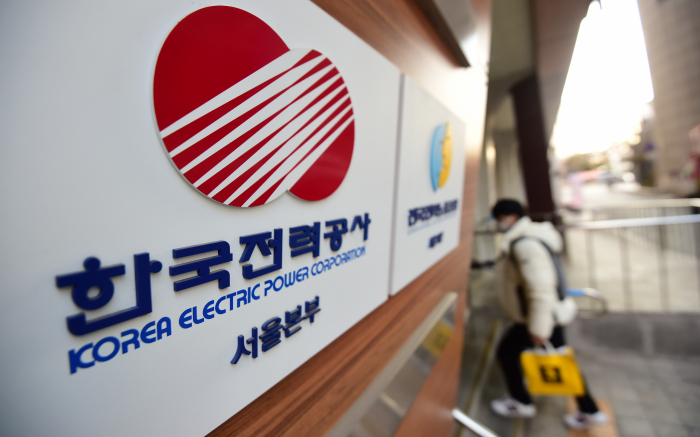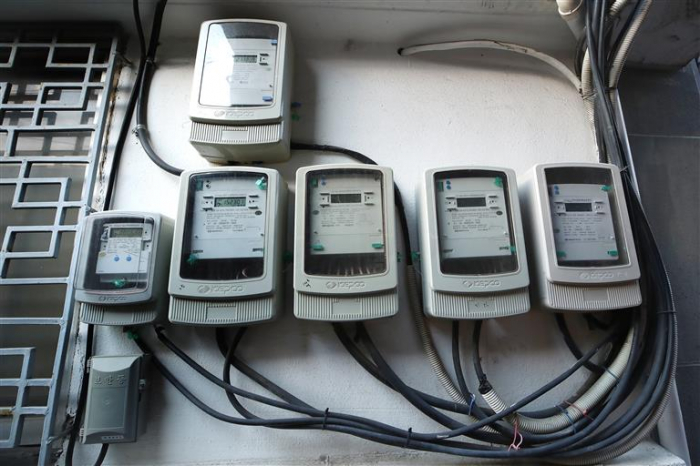KEPCO at record loss on fuel costs; wider losses seen in 2022
As the Ukraine crisis escalates, the Korean utility comes under growing pressure from soaring energy costs
By Feb 25, 2022 (Gmt+09:00)
LG Chem to sell water filter business to Glenwood PE for $692 million


Kyobo Life poised to buy Japan’s SBI Group-owned savings bank


KT&G eyes overseas M&A after rejecting activist fund's offer


StockX in merger talks with Naver’s online reseller Kream


Mirae Asset to be named Korea Post’s core real estate fund operator



South Korean power utility KEPCO Co. reported its largest-ever operating loss of nearly 6 trillion won ($5 billion) in 2021, after it froze the electricity rate for almost eight years.
Despite the price spike of crude oil, coal and natural gas, KEPCO had kept its electricity prices unchanged until the end of September of last year since it last hiked them in late 2013. Its price freeze was in line with the government policies, aimed at curbing inflation and supporting pandemic-hit households and small businsses.
After raising the electricity rate in the last quarter of 2021, the power utility is scheduled to increase the rate twice this year in April and in October.
However, as Russia launched a military attack in Ukraine on Thursday, the conflict cast a grimmer outlook for KEPCO. Analysts forecast its operating loss in 2022 to almost double the previous year's shortfall of 5.9 trillion won ($4.9 billion).
"If the crude oil prices stay around $80 a barrel, KEPCO's operating loss is expected to widen to more than 10 trillion won this year," said an energy industry source.
Russia’s invasion of Ukraine sent Brent crude futures, the international oil benchmark, above $100 per barrel, the highest since August 2014, while gas prices soared.
KEPCO's 2021 operating loss was more than double its previous record shortfall of 2.8 trillion won posted in 2008 at the height of the global financial crisis.
In 2020, it turned to the black after two years of losses, logging an operating profit of 4.1 trillion won thanks to low fuel prices in the pandemic-triggered economic slowdown.

RENEWABLE ENERGY PUSH
Last year, KEPCO's operating expenses shot up by 12 trillion won on-year to 66.4 trillion won, hit by fuel cost hikes.
President Moon Jae-in's nuclear phase-out policy, one of his key campaign policies, pushed KEPCO to shift toward more expensive renewable energy and liquefied natural gas.
The permanent shutdown of Wolsong nuclear power plant's first unit in South Korea in 2018, four years earlier than planned, raised energy costs for the utility.
Renewable energy took a 9% share of KEPCO's energy sources as of end-2021, versus 7% a year earlier.
SALES, DEBT
Electricity demand picked up sharply with the expansion of the electric vehicle market. But its operating loss snowballed since it was unable to pass on the higher fuel costs to consumers for most of the past eight years.
KEPCO's revenue expanded by around 2 trillion won to 60.6 trillion won on-year in 2021.
Wholesale power price, or the power price that KEPCO pays to public and private power generators to buy electricity, skyrocketed 118.6% on-year as of end-January.
To cover the shortfalls, KEPCO has issued debts. It raised 2.4 trillion won in domestic debt last month, followed by 1.9 trillion won in debt issued so far this month.
"The energy market is now in a serious condition equivalent to the oil crisis we experienced before," said Konkuk University's electrical engineering professor Park Jong-bae
"The government should implement every policy and market measure needed to save electricity."
Write to Zi-Hoon Lee at lizi@hankyung.com
Yeonhee Kim edited this article
-
 Renewable energyS.Korea urged to embrace nuclear power to go carbon free
Renewable energyS.Korea urged to embrace nuclear power to go carbon freeFeb 07, 2022 (Gmt+09:00)
3 Min read -
 Carbon neutralityKorea’s state electric companies to cease coal power generation by 2050
Carbon neutralityKorea’s state electric companies to cease coal power generation by 2050Nov 11, 2021 (Gmt+09:00)
2 Min read -
 Renewable energyKorea to require power plants to use more renewable energy resources
Renewable energyKorea to require power plants to use more renewable energy resourcesOct 07, 2021 (Gmt+09:00)
3 Min read -
 ESGKorea’s coal power companies squeezed for financing amid ESG fever
ESGKorea’s coal power companies squeezed for financing amid ESG feverJun 18, 2021 (Gmt+09:00)
3 Min read


